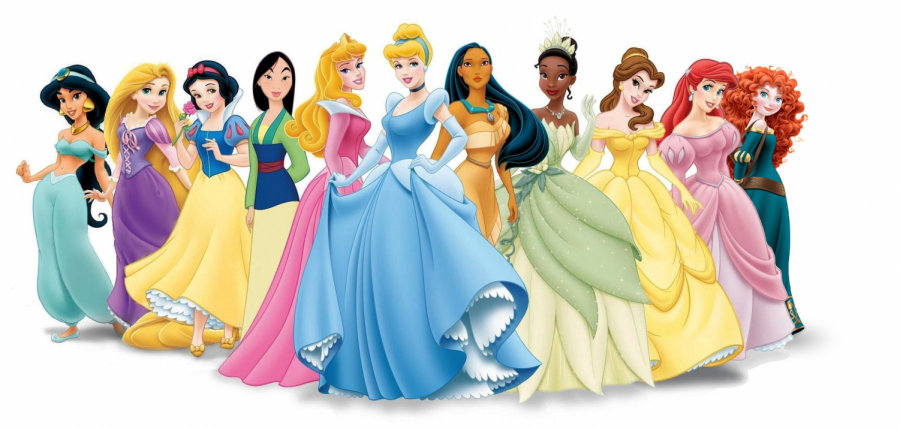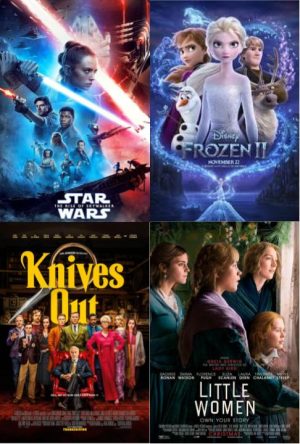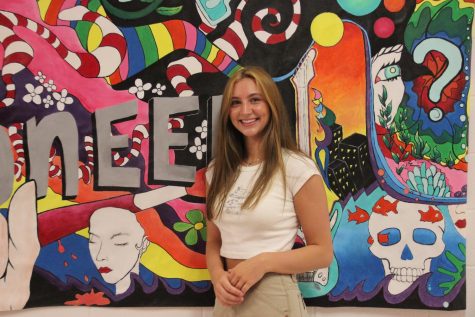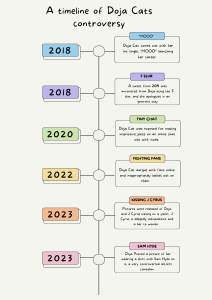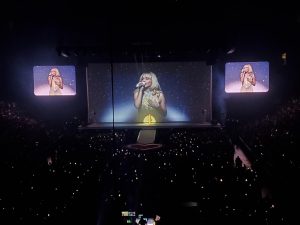Disney’s Princess Problem
October 9, 2020
She slips on her dress and glass slippers and twirls into the bathroom. She pulls out her lip gloss and her sparkly blue eyeshadow. After running a comb through her hair, she places a tiara on the crown of her head and smiles. In an excited manner, she shouts to her mom,
“Aren’t I beautiful?”
For almost a century, Disney has been producing films that are widely adored by all ages, encouraging children everywhere to dress up and imitate their on-screen heroes. The lighthearted, silly plots are entertaining and the characters are so easily loved. Maybe because no one expects there to be less-than-magical implications, there’s rarely ever an analysis of what the movies are teaching their young watchers. The Disney princess franchise is a perfect example of this. On the surface, the movies are fun, exciting, and heartwarming examples of true love and adventure. However, if you dig a bit deeper, there are some potentially harmful underlying aspects.
The feminine beauty ideal is the concept that women’s physical attractiveness is one of their most promising traits and should be something they try to achieve and maintain; this is seen over and over again in Disney’s featured princess movies. Since the very first Disney princess made her debut in 1937 (Snow White), there has been no change to how the princesses’ bodies are represented. Small waists, perfect skin, and unrealistically voluminous hair are still the same features that describe a Disney royal today.
Emma Hatheway, a writer for the Middlebury blog network, sheds light on the hidden, yet very shocking truth of the emphasis on physical appearance in Disney films.
“94% of the fairy tale and princess movies mention physical appearance.” She says, “Within each movie, this discussion occurs on average 13.6 times, with a range from 0 to 114 times for female physical appearance and a range from 0 to 35 times for male physical appearance.”
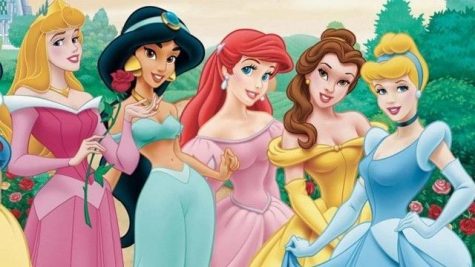
It’s obvious that Disney heroines lack body type diversity, but it’s even more obvious that there is a noticeable lack of racial diversity. Journalist Kimberlie Haner of the BYU journalism team, writes about the potentially upsetting effects for little girls who watch these films.
“For the young viewers of Disney, finding a character to relate to can be very important.” Haner says, “It is easy to pick the character that looks the most like you, but for a young Asian girl, her options are limited.”
I think Disney does a really commendable job at addressing this issue with their film, Mulan. In the movie, a young Chinese girl ditches her traditional duties to take her ill father’s place in the war draft. Disguised as a man, she is fierce in the face of adversity and risks everything to overcome the Hun enemy. There are so many important lessons embedded in this film, and it offers an untraditional Disney princess experience which is very refreshing and inclusive. Though it’s not one of the most popular of the Disney princess film collection, in my opinion, it’s the most influential because of its empowering plot and diversified characters.
However, it’s unfortunate that Mulan’s powerful influence seems to be drowned out by the abundant voices of the other, more popular princesses. Mulan hit the big screens in 1998, so why is she still the only Asian princess 22 years later? Of the 11 films, less than half include a princess of color, and none include variances in physique or facial features. Though Disney has come a long way and is slowly incorporating different representations of princesses into their franchise, there is still a lot of progress to be made.
At the end of the day, Disney will always be centered around magic and bliss and beauty, and I think that’s alright, as long as we continue to combat those with encouragement of self-love and a pinch of realism. Open conversations are a great method to balance out the negative parts of Disney films, and also to prevent the impressionable younger generation from absorbing the damaging beauty ideologies. I don’t think it’s necessary to stop watching Disney films altogether, but I do think we need to push Disney to continue diversifying and expanding their representation of characters. It’s going to be a challenge to rewrite the narrative of body image and diversity that Disney has so repeatedly written. However, once it’s done, it’ll be a crown achievement.

